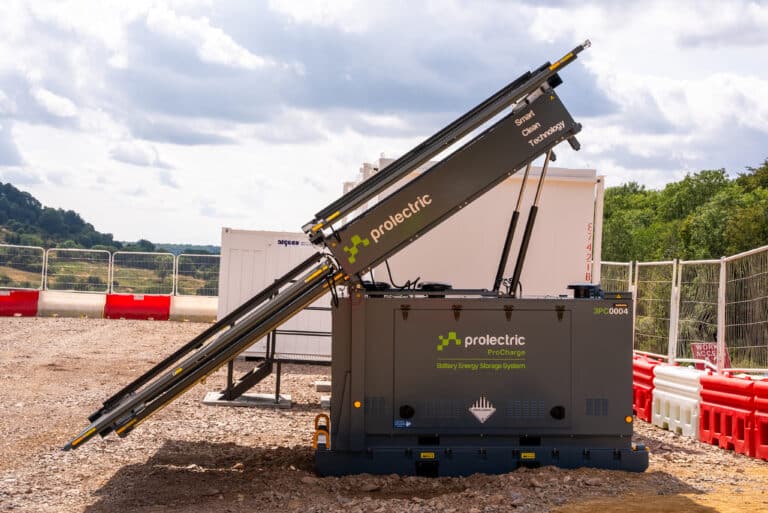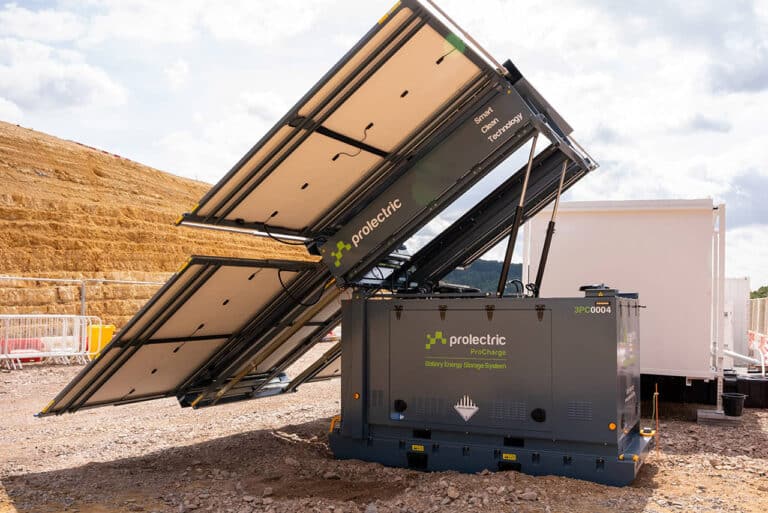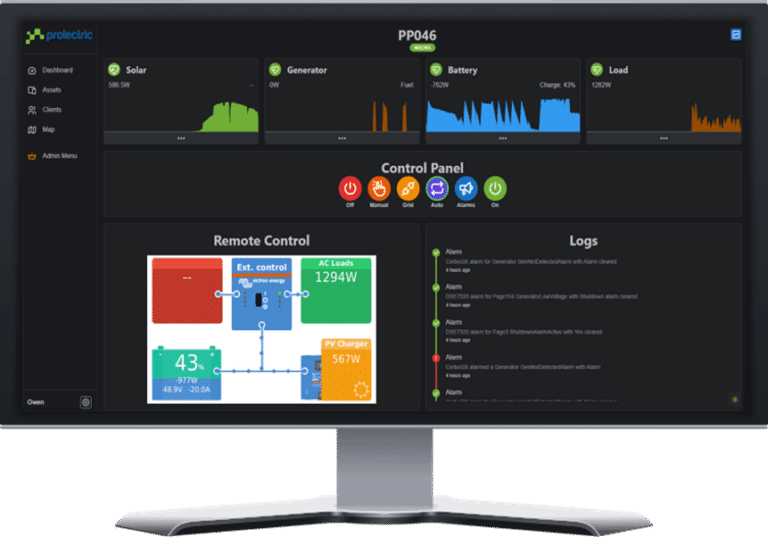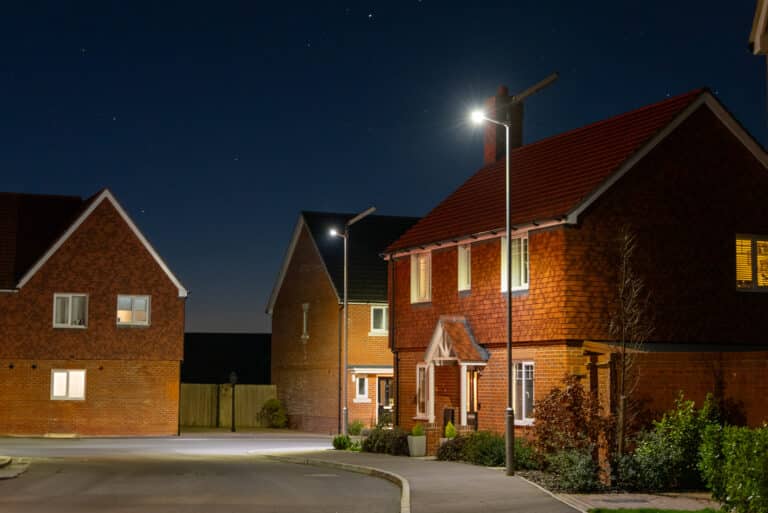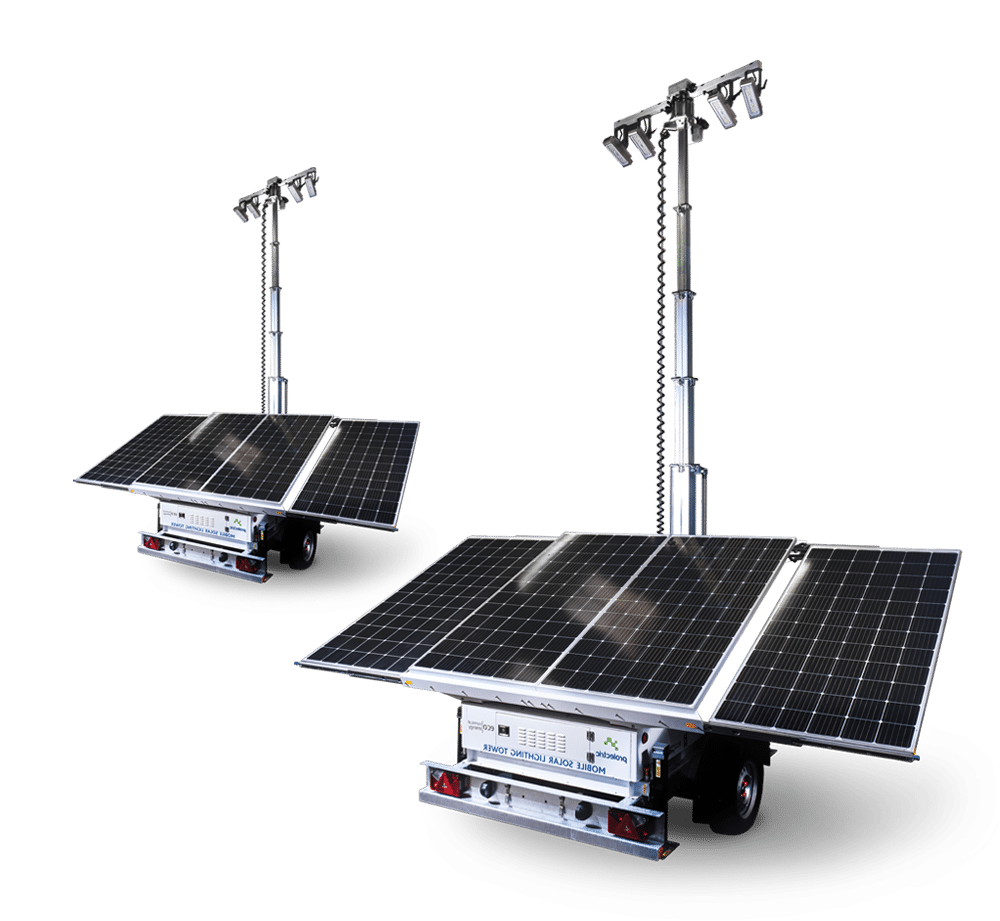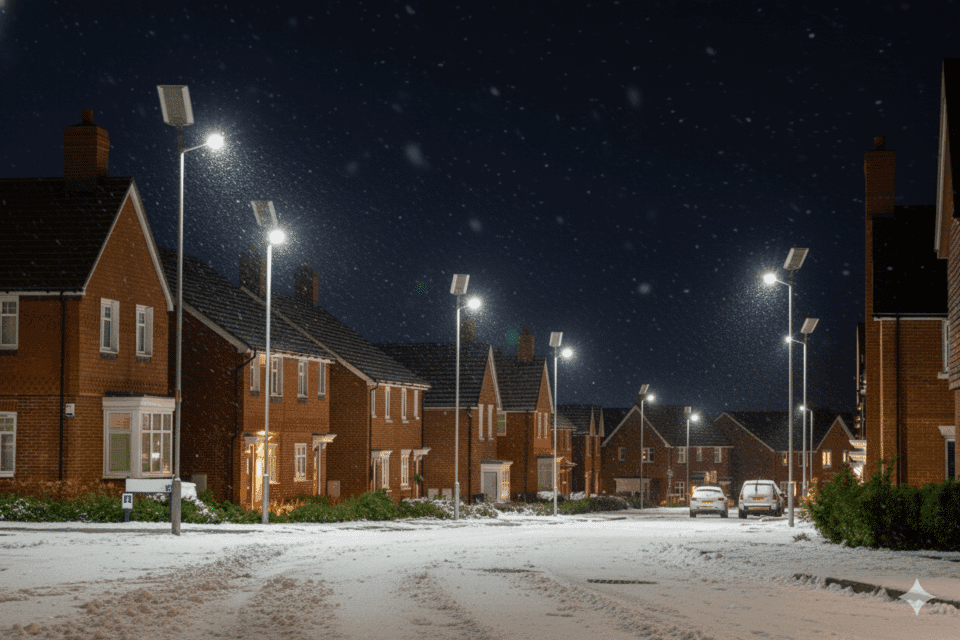
The UK housebuilding sector is facing one of its toughest delivery environments in years. Rising build costs, new planning and biodiversity requirements, grid connection delays and the shift toward low-carbon homes are all reshaping how developments need to be designed and delivered.
But there’s one area where developers can immediately reduce cost, accelerate build programmes and remove carbon for the lifetime of a scheme:
Taking the street lighting off the grid.
Off-grid solar street lighting is no longer a niche option for rural lanes or temporary works – it is now a fully proven, adoptable, permanent solution for new housing developments of every scale. And it’s rapidly becoming one of the simplest ways for housebuilders to take cost, complexity and carbon out of their projects.
Here’s how.
1. Cutting Installation Costs: No Ducting, No Trenching, No DNO Fees
Traditional street lighting is expensive long before a single light is switched on. Developers have to allow for:
- Trenching and ducting across roads and footpaths
- Cable installation and reinstatement
- DNO design fees and connection costs
- Traffic management and programme sequencing
- Delays caused by DNO availability
With off-grid solar lighting, none of that exists.
Every column is a completely self-contained unit – no trenching, no cables, no DNO involvement, no reinstatement. For most sites this represents:
- 15–50% lower total install cost
- Fewer subcontractors and less coordination
- No civils rework
- Faster handover to adopting authorities
For developments built in phases, there is a further advantage: you can light roads and footpaths from day one, without waiting months for power connection.
2. De-Risking the Build Programme: One Less Dependency on the Grid
Grid capacity is now one of the biggest delivery risks in UK construction. Heat pumps, EV charging and higher-performance homes mean grid loads are rising sharply – and DNO lead times are stretching.
Street lighting may only be a small part of the overall power requirement, but it adds complexity and dependencies at exactly the wrong stage of the programme.
Off-grid lighting removes this entirely.
- No waiting for DNO
- No redesign if grid capacity changes
- No delays to adoptable highways lighting
- No service coordination on busy sites
This gives developers more certainty and more flexibility – especially when programme pressure is high and completion dates cannot shift.
3. Zero Operational Energy Costs – For the Life of the Estate
With traditional lighting, once installed you still have:
- Electricity bills
- Control gear maintenance
- Risk of rising energy costs
- Future pressure to decarbonise the lighting network
With solar, external lighting becomes cost-free for life.
There are no energy bills, no standing charges and no carbon emissions from lighting for as long as the estate exists. This matters to:
- Housing associations & RPs – lower service charges
- Build-to-rent operators – predictable OPEX
- Local authorities – publicly demonstrable carbon savings
- Private for sale schemes – a premium sustainability benefit
It’s a one-time investment with permanent savings.
4. Avoiding Future Retrofit: Build It Zero-Carbon From Day One
The Future Homes Standard and wider UK policy are clear: new homes must be low-carbon, “2050-ready” and cheap to run. That applies to the public realm too.
Installing grid-connected lighting today means future retrofit work will be required as standards tighten – cabling, control gear and in some cases full column replacement.
Solar eliminates that risk.
By delivering zero-carbon street lighting at build stage, developers avoid a new retrofit cycle entirely and deliver estates that don’t need decarbonising later.
5. Better Compliance With Planning, Dark Skies & Biodiversity Net Gain
Planners are increasingly focused on lighting quality, spill control, ecology impact and dark-sky alignment – particularly for rural, semi-rural and edge-of-town developments.
Modern solar street lighting delivers:
- Smart control (dimming, timing, adaptive profiles)
- Precise optical distribution to minimise glare and spill
- Lower upward light to protect wildlife
- BNG-friendly lighting plans with reduced impact zones
For planners, these systems often result in:
- Fewer lighting objections
- Cleaner planning conditions
- Stronger alignment with local ecology strategies
For residents, it means safer, more comfortable streets with less intrusive lighting.
6. A Tangible Sustainability Story for Buyers, Investors and Councils
House building is under rising scrutiny from customers and investors who expect low-carbon, low-impact homes with transparent operational savings.
Solar street lighting offers a real, visible proof point:
“Our streets are lit by the sun, not the residents’ energy bills.”
Developers can point to:
- Zero-carbon public realm
- Lower whole-life cost
- Reduced embodied carbon compared to cable-heavy systems
- A modern, future-proofed estate design
It’s a rare sustainability upgrade that is commercially beneficial, not burdensome.
7. The Prolectric Advantage
At Prolectric, we support housebuilders by delivering:
- Adoptable, permanent solar street lighting designed for UK conditions
- Full lighting design, specification and layout plans
- Installation without trenching, cabling or DNO involvement
- Smart control profiles aligned with ecology and planning requirements
- Lifetime operational savings with zero energy cost and minimal maintenance
- A single point of responsibility from design → installation → maintenance
Our systems provide year-round reliability, proven on thousands of units installed nationwide across residential, highways, public sector and industrial environments.
Conclusion: A Simple Way to Lower Cost, Lower Carbon and De-Risk Delivery
For housebuilders looking to deliver better value homes, lower-carbon estates and more robust delivery programmes, solar street lighting has gone from “interesting idea” to practical, cost-saving standard practice.
It removes infrastructure cost.
It removes future energy cost.
It removes carbon – permanently.
And it removes risk from your programme.
In a sector facing so many external pressures, that combination is rare.
See how much your development could save. Speak to our team for a full solar street lighting design and cost comparison.











